SAMHSA Offers Guidance and Forms for Medicaid/CHIP Provider Relief Fund Payments
HHS’ Substance Abuse and Mental Health Services Administration (SAMHSA) is providing guidance, instructions, and application forms after HHS announced this week it will distribute $15 billion to eligible Medicaid and Children’s Health Insurance Program (CHIP) providers during the Covid-19 pandemic.
HHS said the payment to each provider will be at least 2% of reported gross revenue from patient care. The department also said the final amount each provider receives will be determined after the data is submitted, including information about the number of Medicaid patients providers serve.
According to SAMHSA, before applying to the enhanced provider relief portal, applicants should read the Medicaid provider distribution instructions and download the Medicaid provider distribution application form.
Independent Task Force Recommends Screening All Adults for Unhealthy Drug Use
The U.S. Preventive Services Task Force (USPSTF) this week recommended that all adults 18 and older be screened regularly for unhealthy drug use, which is defined as using illegal drugs or taking medications not specified for a medical reason.
Previously the agency did not issue a recommendation on the subject, saying there was insufficient evidence to suggest regular screening. This new guidance follows a review of studies that evaluated the sensitivity of screening tools—most of which were moderately or highly accurate in identifying unhealthy drug use.
Established in 1984, USPSTF is an independent, volunteer panel of national experts in prevention and evidence-based medicine. The group works to improve the health of all Americans by making evidence-based recommendations about clinical preventive services such as screening, counseling services, and preventive medications. The task force’s views are not meant to be construed as those of HHS or HHS’ Agency for Healthcare Research and Quality (AHRQ).
AHRQ Requests Information on Older Adult Opioid Use and Misuse in Primary Care Settings
AHRQ this week issued a notice requesting public comments on identifying and testing strategies for management of opioid use and misuse in older adults in primary care practices.
According to the notice, this project is meant to assess and describe the current prevalence, awareness, and management of opioid use, misuse, and abuse in older adults, and identify the gaps and areas of needed research.
“Additionally, this project will support primary care practices in developing and testing innovative strategies, approaches, and/or tools for opioid management within the context of facilitated learning collaboratives, culminating in a compendium of strategies for opioid management in older adults in primary care settings,” the notice said.
Click here to learn more about the project and how to submit comments within 60 days of the June 8 notice.
ONDCP to Launch Rural Community Toolbox Website on June 24
The White House Office of National Drug Control Policy and senior Trump Administration officials will virtually launch the Rural Community Toolbox website, a resource for rural communities affected by addiction, on Wednesday, June 24.
The Rural Community Toolbox is intended to serve as a clearinghouse for funding and resources in more than a dozen different federal agencies to help rural leaders build healthy, drug-free communities.
Click here for more information when it becomes available and to register for the virtual launch, which will begin at 3 p.m. ET.
NABH President and CEO Shawn Coughlin Participates in Project Wake Up Panel Discussion
NABH President and CEO Shawn Coughlin was one of seven panelists to participate in an in-depth panel discussion about mental health stigma and suicide in America.
Project Wake Up led the June 11 panel as a follow-up to the world premiere last week of Wake Up, a documentary about suicide, ending mental health stigma, and making sure people who need treatment receive it.
Former U.S. Rep. Patrick Kennedy (D-R.I.), Craig Bryan, Psy.D. of the Ohio State University’s psychology department, Morissa Henn of InterMountain Healthcare, and Michael Zibilich, whose son died by suicide in 2012, were among the other panelists.
Fact of the Week
Buprenorphine treatment rates by primary care providers increased from 12.9 people per 10,000 population in 2010 to 27.4 in 2018.
For questions or comments about this CEO Update, please contact Jessica Zigmond.

